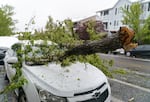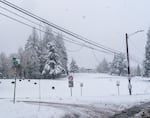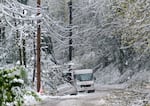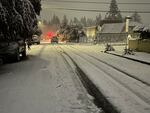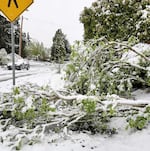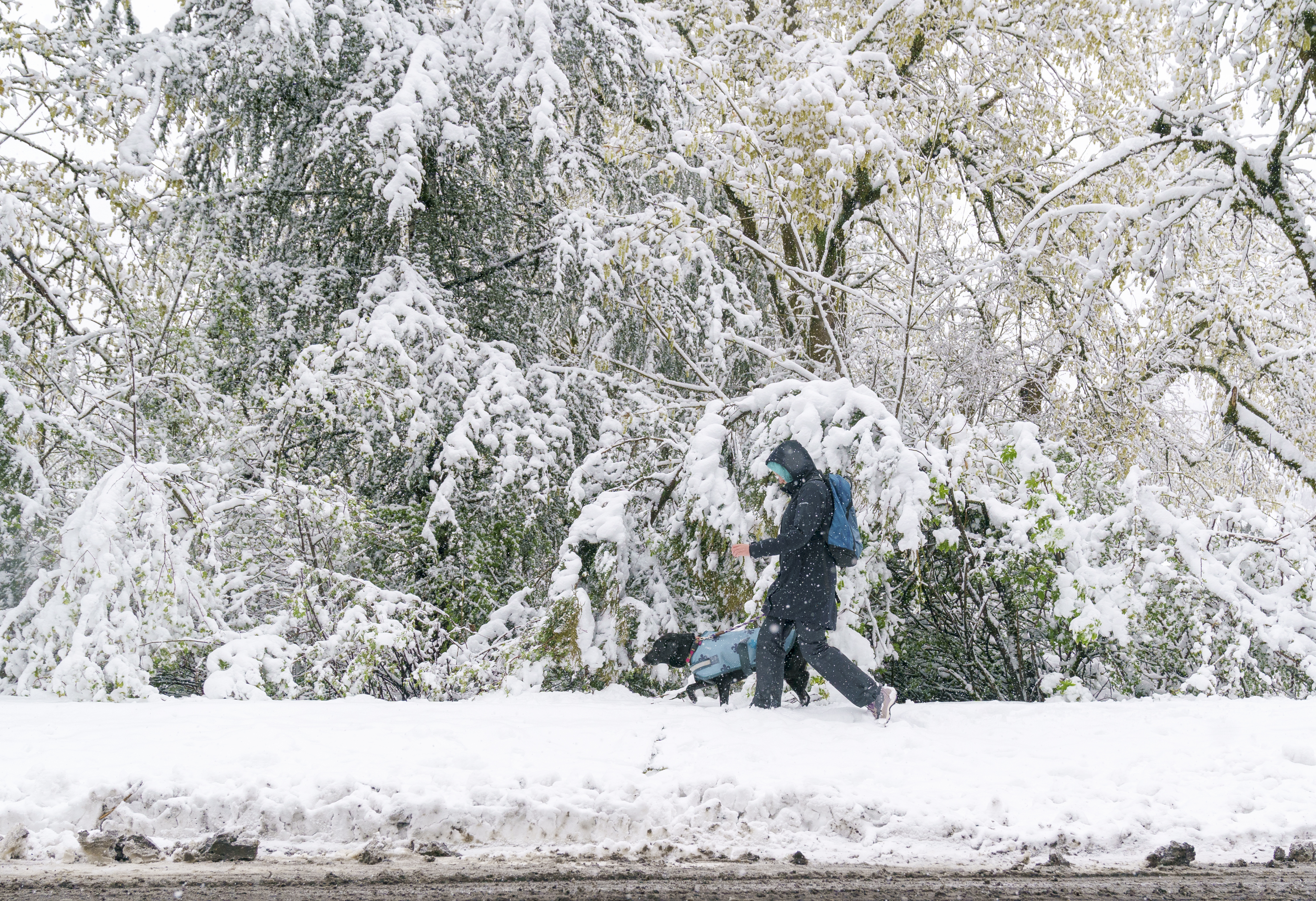
A pedestrian walks along Barnes Rd. in Portland, April 11, 2022.
Kristyna Wentz-Graff / OPB
This week’s rare snowstorm could be an indication of climate change, but climate scientists say it’s too early to tell, as global warming trends make this event unlikely to be related.
Data from the National Weather Service dating back to 1872 shows snow has been recorded in downtown Portland at least six times during the month of April.
Oregon’s state climatologist Larry O’Neill said these late-season snowstorms have gotten less frequent as the climate gets warmer, but Monday’s snowfall should not be considered an extreme event, despite Portland temperatures reaching into the mid 70s last week.
The snowstorm was “typical weather variability and not any sign of climate change,” O’Neill said. “I think the real story here is that we used to get snow more often in April in Portland and now we don’t.”
The snowstorm in Western Oregon and Southwest Washington brought at least an inch of snow to the Portland metro area. Portland International Airport, where the National Weather Service began keeping records in 1940, recorded its first instance ever of snow falling and sticking during the month of April. Snowfall accumulated throughout the Portland metro region and Southwest Washington, reaching as high as 11 inches in some areas.
But data from the National Weather Service’s previous downtown Portland office shows there were at least six instances in the past 100 years where snowfall was recorded during the month of April.
On April 1, 1936, a little over 5 inches of snow were recorded in downtown Portland. An inch and a half of snow was also recorded on April 7, 1933. There are also three instances where a tenth of an inch of snow was recorded during the month of April in 1895, 1901 and 1903.
I'm going through old Oregonian articles looking at historical accounts of April snow in and around Portland. It appears earlier in the 20th Century, April snow occasionally happened but wasn't measured by the very few weather stations which monitored for it. 1/
— Oregon Climate Office (@ORClimateSvc) April 12, 2022
O’Neill, who directs the Oregon Climate Service and works as an associate professor in Oregon State University’s College of Earth, Ocean and Atmospheric Sciences, said Monday’s snowstorm was not unprecedented but it was unusual in part because lowland snow is becoming less frequent as the climate is warming.
“Some people are saying, ‘Oh, extreme events happen more often under a changing climate.’ And some extreme events it is true, but this, I wouldn’t categorize as an extreme event, and it’s definitely not unprecedented,” he said.
O’Neill said lowland snow is typical during “La Niña,” a weather pattern that occurs in the Pacific Ocean that creates and shifts cooler temperatures up north during the winter while the south experiences warmer drought-like conditions. Lowland snow conditions could also be spotty as some areas will see snow that doesn’t stick.
Historically, O’Neill said, if the weather station did not get any snow, and other parts of the city or region did, it would not get recorded as a snow day since it did not occur where the National Weather Service has its official equipment.

A plow works W. Burnside Rd. in Portland, April 11, 2022. The snowfall amount varied widely across the metro area.
Kristyna Wentz-Graff / OPB
Climatologists in Oregon and Washington said the additional precipitation from this week’s storm will improve but not eliminate drought conditions across the Northwest.
Paul Loikith, associate professor of geography at Portland State University said he agrees the snowstorm does not have a strong connection to climate change as spring weather has warmed over the past 80 years.
“It’s kind of in the opposite direction of the way the statistics are going as far as warming temperatures,” he said. “Aprils are warming in Portland. We’re seeing in general less extreme cold over time, and that’s projected to continue.”
Loikith said springtime is getting warmer and summer is the region’s fastest warming season, but warming is seen across every month of the year. He said it would be unlikely this snowstorm would be attributed to climate change based on trends and temperatures from existing knowledge on how climate change is affecting the region.
But Loikith said there cannot be a definitive answer until a proper analysis has been done. Attributing the snowstorm to climate change could require running two weather models comparing the likelihood of this event occurring in a pre-industrial climate versus today’s climate.
“Weather is capable of a wide range of extremes, even in the absence of human activity,” Loikith said.
Loikith said a perfect example of an extreme weather event occurring because of climate change was last June’s heat dome event, as it aligns with warming trends in the region. Wildfires are also examples of extreme weather events occurring because of warming temperatures that can be attributed to climate change.
“Those impacts we’ve already felt,” he said. “We can measure it. It’s clearly connected.”

